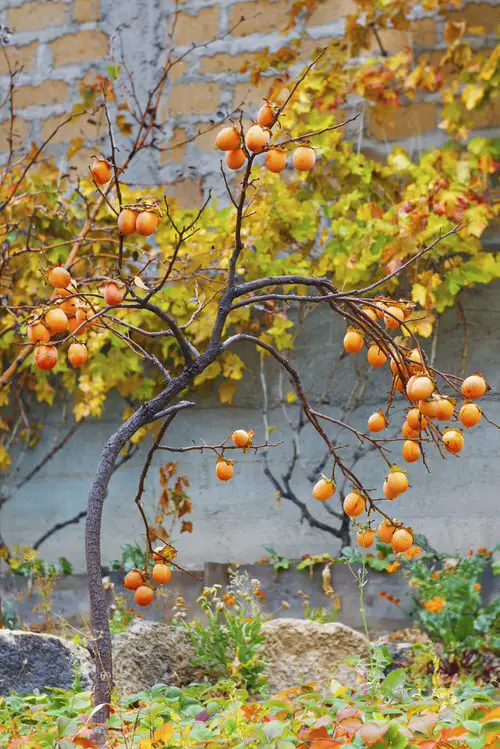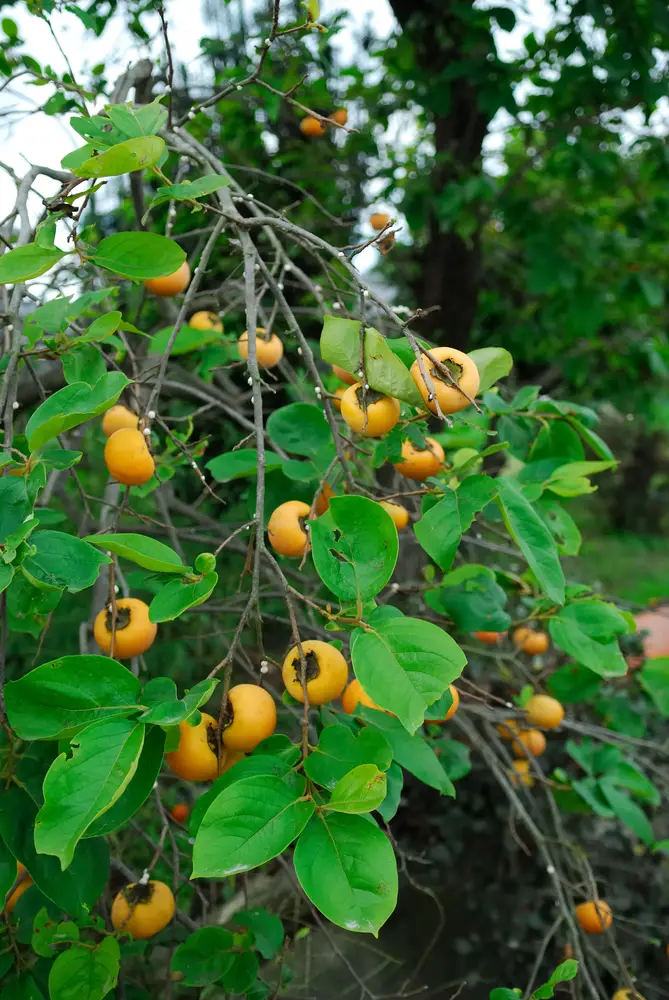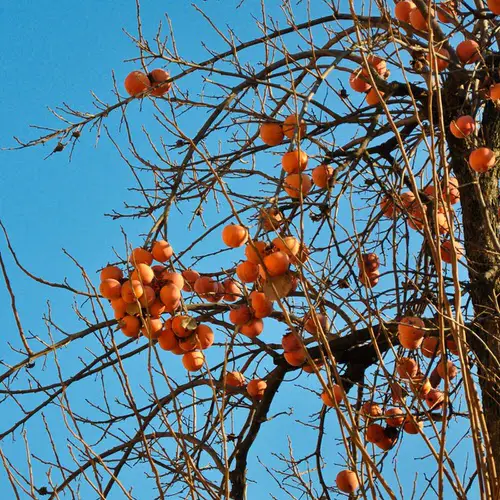Check out all the details on How to Grow Persimmon and include this beautiful tree in your garden to enjoy its fresh astringent fruits.

If you want fresh fruits that can be used to make delicious wine, then here’s everything about How to Grow Persimmon easily in your garden.
USDA Zones: 4-11
Check out some amazing fall foliage plants here
Persimmon Trees Information
Persimmon (Diospyros virginiana) is native to Eastern North America. These trees are cold-hardy and a great choice for novice gardeners who can try growing them in spring after frost.
This deciduous tree grows slowly and takes 8-10 years to bear fruits. When ripen it has a custard-like texture and sweet taste similar to honey. The tree has blue-green foliage that turns orange and yellow in fall. It can grow up to 35-50 feet tall and bloom during late spring producing white or pink flowers. Its three main species are:
- Diospyros virginiana (D.virginiana) is native to North America and popular as American persimmon.
- Diospyros lotus is also famous as a date plum and is native to central Asia and India.
- Diospyros kaki (D.kaki) is popular as Japanese persimmon and is native to China.
American Persimmon Varieties

American Persimmon has two varieties—astringent and non-astringent.
Astringent fruit tastes best when it turns jelly-soft, whereas non-astringent tastes great when it’s fully ripe and firm. These fruits are a good source of potassium, fiber, vitamin A, and C.
If you live in a cold climate, then the best varieties to grow are Eureka, Fuyu, Great Wall, Hachiya, and Jiro.
For warm climates, go with Claypool, Early Golden, John Rick, Killen, and Prok.
How to Plant Persimmon Trees?
Select a location that gets plenty of sunlight all day long. Make sure that the tree gets enough space to spread. You can grow it from both seeds and cuttings.
Growing Persimmon Tree in Container

As the tree has long taproots, it is not advisable to grow it in containers. However, if you have less space and want to have it in your home, use a container at least 22-24 inches wide and deep. You can also use a big wine barrel.
Growing Requirements of Persimmon Tree

Light
Like the other flowering and fruit trees, persimmon grows best where it can get bright and direct sunlight for the most part of the day. If you have selected a spot that gets partial sun, then it will result in fewer fruits.
Soil
Persimmons favor slightly acidic and loamy soil but are flexible to a range of conditions. If you want the best height and juicy fruits, use compost-rich and loamy soil that’s well amended with plenty of organic matter. Also, it must be well-draining.
Water
Once mature, persimmons do not require extra water and will take care of themselves on their own. If you live in a warm climate, make sure to water the tree once a week.
Water the young plant when the topsoil feels a bit dry to touch.
Temperature
The plant does best in the temperature range of 8-35 C (46-95 F). Avoid exposing the plant to a temperature below 5 C (41 F) for a longer duration, as it might harm the growth.
Persimmon Tree Care

Fertilizer
This deciduous tree can live without extra fertilizer. To boost the growth while the plant is young, use a balanced liquid feed, diluted to half of its strength, once in 4-6 weeks.
Pruning
Give the tree a strong and healthy structure by pruning it properly in the early stage. This will help it to have a nice shape and growth, and you can also trim it from the early stage so it grows according to the space in your garden.
Once mature, cut back any dead branches. You can prune persimmon into espalier or hedge form too.
Pest and Diseases
Persimmons are not vulnerable to pests and diseases but mealybugs and ants can trouble these trees. Try organic methods for protecting the fruit.
Harvesting Persimmon

The tree starts to bear fruits after 4-6 years of planting. When the fruits take a bright orange-red color, they are ready to harvest, which is usually in the late fall.
Allow the American persimmon to ripen fully before harvesting to enjoy the sweet flavor. Use a pair of scissors to make a clean cut.



Thank you for your hard work. It gives an idea of growing persimmon in a container. However what fertilisers need to apply is to be written broadly.